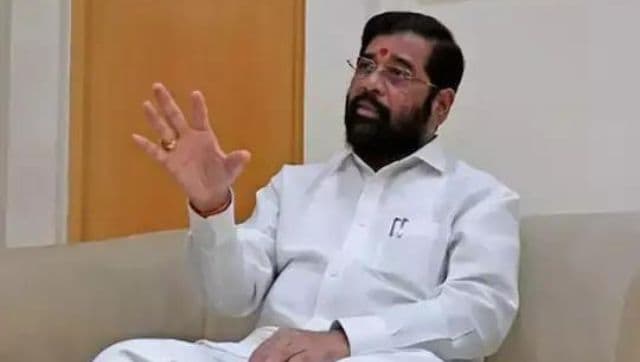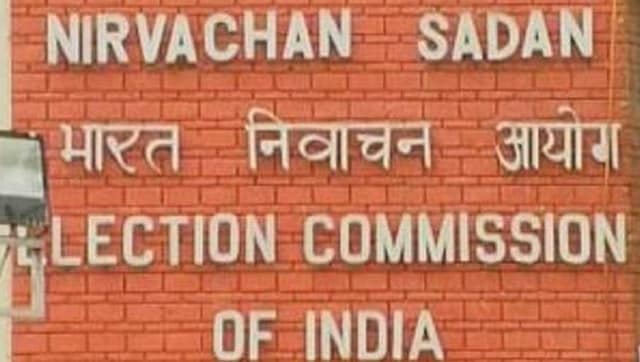Even as Shiv Sena chief Uddhav Thackeray asked the MLAs of the breakaway faction currently in Guwahati to return and talk to him, reports have emerged that the Eknath Shinde camp is preparing to claim the party’s ‘bow and arrow’ election symbol. The big questions on everyone’s minds at the moment are the same: Who is the ‘real Shiv Sena’? And who will get the symbol? Let’s take a closer look: Experts say the fight for the symbol will come later. First things first though. Speaking to News18, Mumbai-based political analyst Sanjay Jog said, “Right now, the Shinde camp is busy showing that they are the ‘real Shiv Sena’ and that they have the support of 39 legislators who were elected on the party symbol. As they have crossed two-third mark of 55 (Shiv Sena strength in Assembly), they argue they will not face action under the anti-defection law.” “They are claiming that they will not attract any action under the anti-defection law as they have more than two-thirds majority (among the party’s legislature wing),” Jog said. But it’s not just a simple numbers game either. The new faction would not immediately be recognised as a separate party. The anti-defection law protects the rebel legislators as long as they merge with another party, as per DNA. [caption id=“attachment_10832501” align=“alignnone” width=“640”]
 Shiv Sena MLA Eknath Shinde. News18[/caption] “The ‘real Shiv Sena’ will have to have majority support from all office-bearers in the party, legislators, and Members of Parliament. Just having a large number of MLAs on one’s side is not enough for it to be recognized as the party,” a senior party leader who did not wish to be named told News18. So what next?
Shiv Sena MLA Eknath Shinde. News18[/caption] “The ‘real Shiv Sena’ will have to have majority support from all office-bearers in the party, legislators, and Members of Parliament. Just having a large number of MLAs on one’s side is not enough for it to be recognized as the party,” a senior party leader who did not wish to be named told News18. So what next?
It’s complicated.
“After trust vote and also crossing the legislative and legal hurdles, they will try to take up the issue of the symbol with the Election Commission. For this, they require the support mentioned in the EC rules and norms which is based on their region-wise branches, district karyakarnis, and executives. This will be countered by Shiv Sena of course,” he added. “But if they are deemed qualified by the deputy speaker and upheld by the apex court, then the whole story will change.” So the EC decides? Yes. The EC’s powers in dealing with a split in a political party are spelled out by the Election Symbols (Reservation and Allotment) Order, 1968: “When the Commission is satisfied… that there are rival sections or groups of a recognised political party, each of whom claims to be that party the Commission may, after taking into account all the available facts and circumstances of the case and hearing (their) representatives… and other persons as desire to be heard, decide that one such rival section or group or none of such rival sections or groups is that recognised political party and the decision of the Commission shall be binding on all such rival sections or groups.” Former secretary general of Lok Sabha PDT Achary told India Today, “The EC has to decide which faction is the real party and after hearing both the parties in detail and evidence submitted before it before deciding on the allocation of the symbol.” How does it do so? The EC makes its decision by examining precedents and which way maximum lawmakers and office-bearers lean. [caption id=“attachment_8744041” align=“alignnone” width=“640”]
 Representational Image. PTI[/caption] As per Indian Express, in case of a dispute, the EC first examines the support each faction enjoys, both within the party’s organisation and its legislature wing. Then it identifies the top committees and decision-making bodies within the political party and proceeds to know how many of its members or office-bearers back which faction. It also counts the number of lawmakers and legislators in each camp. This applies to disputes in recognised national and state parties. For splits in registered but unrecognised parties, the EC usually advises the warring factions to resolve their differences internally or to approach the court, as per the report. In short? Taking all the above into consideration, the EC can rule in favour of either faction or neither of them. What happens if EC can’t rule in either favour? It can freeze the party’s symbol and ask the two factions to register with new names and symbols.
Representational Image. PTI[/caption] As per Indian Express, in case of a dispute, the EC first examines the support each faction enjoys, both within the party’s organisation and its legislature wing. Then it identifies the top committees and decision-making bodies within the political party and proceeds to know how many of its members or office-bearers back which faction. It also counts the number of lawmakers and legislators in each camp. This applies to disputes in recognised national and state parties. For splits in registered but unrecognised parties, the EC usually advises the warring factions to resolve their differences internally or to approach the court, as per the report. In short? Taking all the above into consideration, the EC can rule in favour of either faction or neither of them. What happens if EC can’t rule in either favour? It can freeze the party’s symbol and ask the two factions to register with new names and symbols.
In case polls are around the corner, it can ask factions to pick a temporary symbol.
If the factions decide to unite in the future and seek the original symbol back, the EC is empowered to rule on the merger and could decide to restore the symbol to the unified party. With inputs from agencies Read all the Latest News , Trending News , Cricket News , Bollywood News , India News and Entertainment News here. Follow us on Facebook , Twitter and Instagram .
)